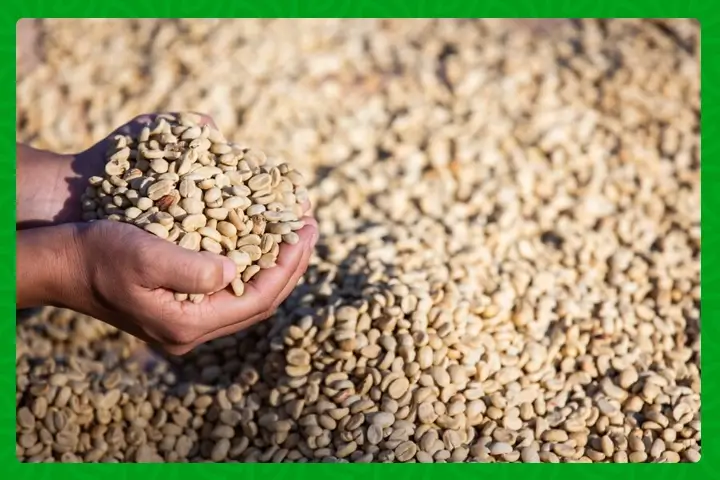
Written by Anil M V, 24 years’ experience, {Bsc. Agric, MBA, CTP} Founder, * Organil Services
In the vast expanse of time, humanity has witnessed remarkable shifts in population dynamics, from humble beginnings to exponential growth. Today, we stand at a critical juncture where the burgeoning global population presents both unprecedented challenges and unparalleled opportunities. As the world’s inhabitants surge towards an estimated 10 billion by 2050, the pressing need for sustainable agricultural practices and fortified food security has never been more urgent. This will substantially increase the demand for food, especially for animal products, fruits, vegetables, and cereals.

However, the current food system is not only failing to ensure food security and nutrition for all, but also harming the environment and human health. Today, nearly 690 million people are undernourished, while more than two billion are overweight or obese. At the same time, agriculture is the largest user of freshwater, a major contributor to greenhouse gas emissions, and a driver of deforestation and biodiversity loss . Moreover, food systems generate enormous amounts of food loss and waste, estimated at one-third of the total food produced.
Clearly, there is an urgent need to transform the food system to make it more healthy, equitable, and sustainable. But how can this be achieved? Here are some possible solutions:
– Promote sustainable agricultural practices that enhance soil health, water efficiency, and resilience to climate change. This can include adopting agroecology, organic farming, conservation agriculture, and integrated pest management.
– Reduce food loss and waste along the entire food supply chain, from production to consumption. This can involve improving infrastructure, storage, transportation, processing, packaging, and marketing, as well as raising awareness and changing behaviors among consumers and retailers.
– Shift dietary patterns towards more plant-based and less animal-based foods, which have lower environmental impacts and health benefits. This can be encouraged by providing education, information, and incentives, as well as reforming food policies and subsidies.
– Enhance food security and nutrition for the most vulnerable groups, especially women, children, and the poor. This can be done by improving access to diverse, safe, and nutritious foods, as well as strengthening social protection, health care, and education systems.
– Empower smallholder farmers, especially women and youth, who produce most of the food in developing countries. This can be achieved by increasing their access to land, credit, inputs, technology, markets, and extension services, as well as supporting their participation in decision-making and governance.

The Conundrum of Population growth versus food production is not a novel one. Throughout history, civilizations have grappled with feeding their people, often resorting to innovative farming techniques or expansion into new territories. However, in our modern age of interconnectedness and resource depletion, traditional solutions fall short in the face of soaring demand.
At the heart of this challenge lies the necessity for agricultural innovation. Traditional farming practices, while effective in their time, are no longer sufficient to meet the needs of a swelling global populace. Climate change, diminishing arable land, water scarcity, and environmental degradation further compound the complexity of the issue, necessitating a paradigm shift in our approach to food production.
Fortunately, the seeds of change have already been sown. Across the globe, visionary farmers, scientists, and entrepreneurs are harnessing the power of technology and sustainable practices to revolutionize agriculture. From vertical farming and aquaponics to precision agriculture and genetic engineering, a myriad of innovations are reshaping the agricultural landscape, enabling us to produce more food with fewer resources.
Furthermore, the concept of food security extends beyond mere production. Access to nutritious and affordable food is essential for the well-being of individuals and communities alike. Addressing issues of distribution, storage, and affordability is paramount in ensuring that no one goes hungry in a world of abundance.

Yet, the path towards agricultural sustainability and food security is not without its obstacles. Socioeconomic disparities, political instability, and vested interests often hinder progress, perpetuating cycles of poverty and hunger. Moreover, ethical considerations surrounding genetically modified organisms (GMOs) and intensive farming practices necessitate careful deliberation to ensure that progress is equitable and sustainable.
In confronting these challenges, collaboration is key. Governments, NGOs, private sector entities, and local communities must work hand in hand to develop holistic solutions that address the multifaceted nature of food security. Investments in agricultural research and infrastructure, coupled with policies that prioritize sustainability and social equity, are essential for fostering a resilient food system capable of weathering the storms of the future.

As we stand on the precipice of a new era, the choices we make today will shape the destiny of generations to come. The imperative of ensuring food security for all is not merely a moral obligation but a strategic necessity for the survival and prosperity of our species. By embracing innovation, fostering collaboration, and cultivating a shared vision of a more sustainable future, we can nourish a growing world and pave the way for a brighter tomorrow.


















